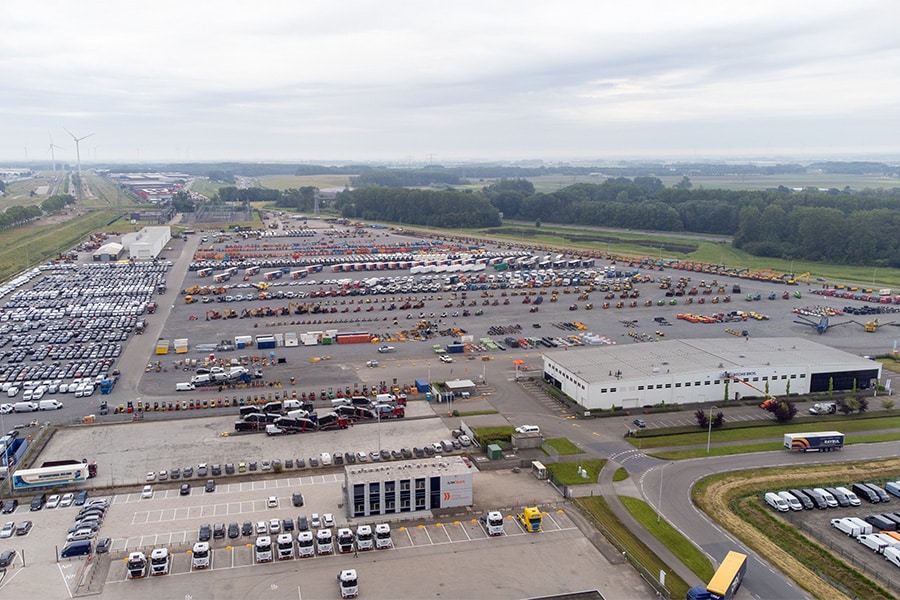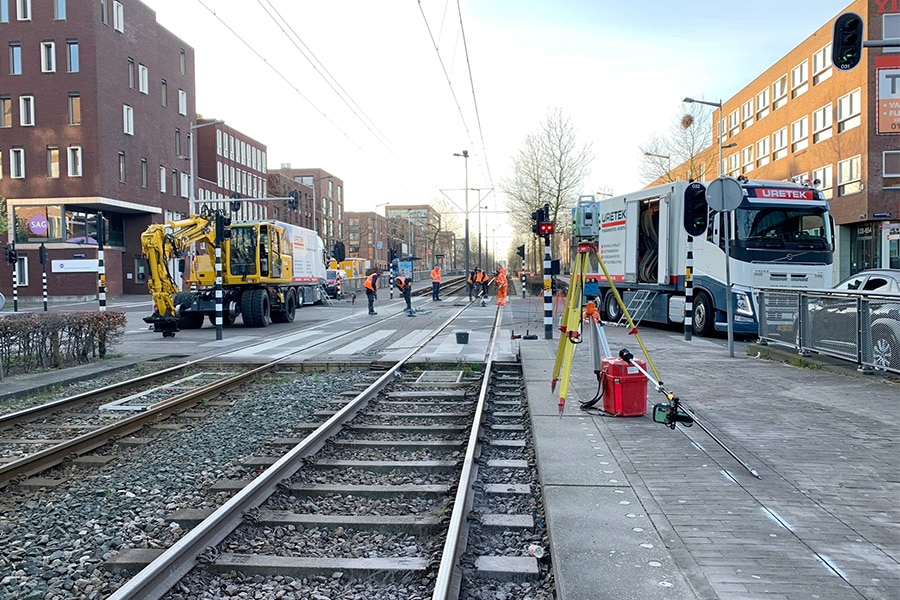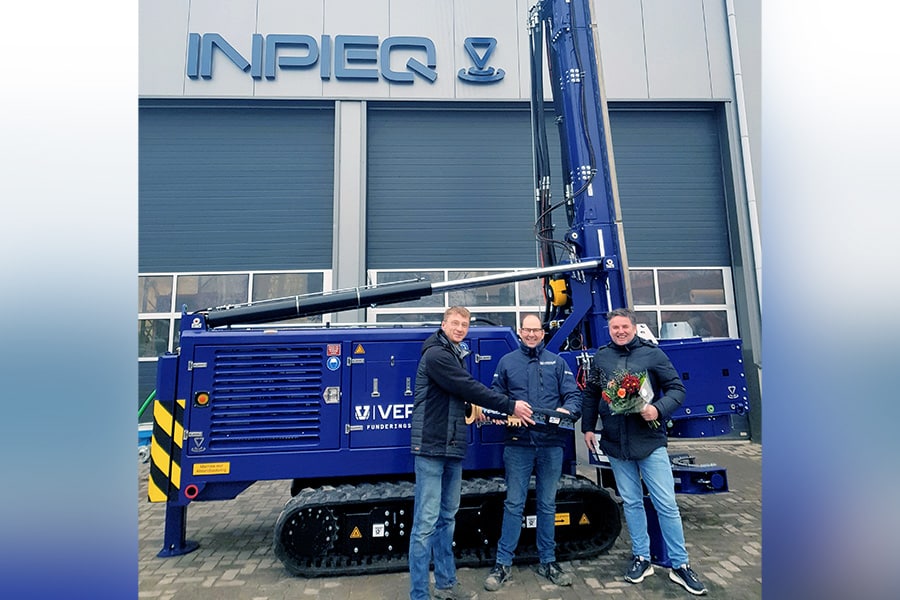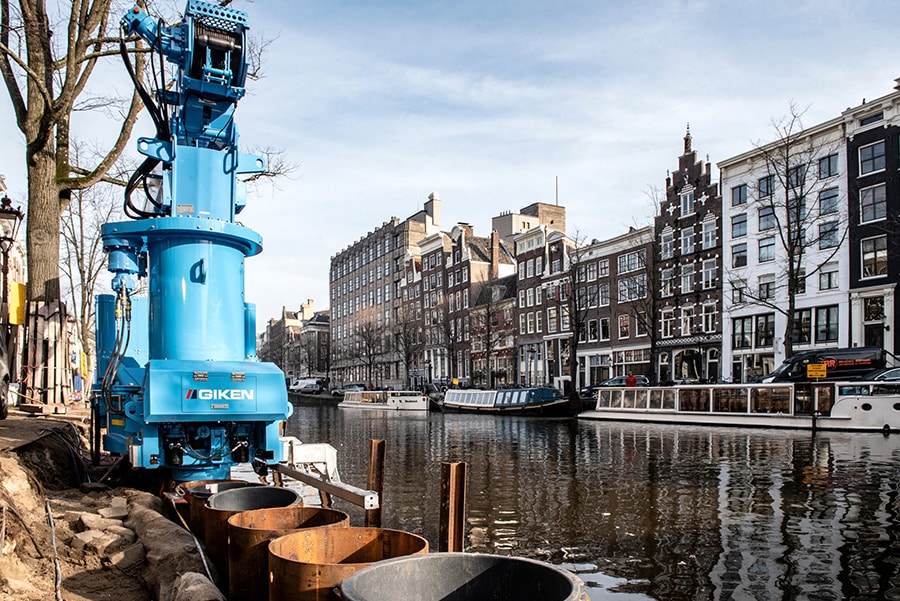
Unique sand conveyor over highway
Mobile plant for sand transport
1.2 million cubic meters. That is the total amount of sand moved during the project by means of a conveyor belt over the A7. It is the first time in our country that a transport system of this magnitude has been placed over a highway. For N.M. Heilig the challenge to design, build and construct this conveyor belt on site.
The conveyor belt daily transported 5,000 to 6,000 cubic meters of sand from the IJsselmeer side to the Wadden Sea side. This sand was needed for the sand bed on which the 70,000 special Levvel blocks were placed. Thanks to this construction over the road, the lock and road traffic were spared. "You can imagine that regular transport would have quite an impact on both navigation and road traffic," says Steven Beukers of N.M. Heilig. "So the assignment from construction consortium Levvel (BAM, Van Oord, Rebel and Invesis) was to develop a system that transports the sand above the highway."

Mobile installation
The major challenge for N.M. Heilig was not even so much in designing a special conveyor belt as in the fact that the conveyor belt had to be mobile. "After all, the Levvel blocs are being installed in phases over a 32-kilometer stretch along the Afsluitdijk. In order to minimize disruption to traffic on the A7 during the movements, the whole thing had to be assembled and installed on site in a short period of time."
Stringent safety requirements
In addition, the installation had to meet very strict safety and quality standards, similar to a regular bridge over a highway. For example, the conveyor belt had to withstand a full northwest wind from the North Sea, traffic was not allowed to be affected by windblown sand, and it had to be safe for the people on the work sites to work. N.M. Heilig therefore equipped the belt with galvanized steel caps, an enclosed wooden floor and high sidewalls at the bottom of the bridge structure. It was operated remotely with safety interfaces between the systems, and electrical sensors monitored the belt. Special lighting was even installed to minimize disturbance to the surrounding nature. "All in all, this was a unique and challenging project for our project managers and engineers that we enjoyed working on."



